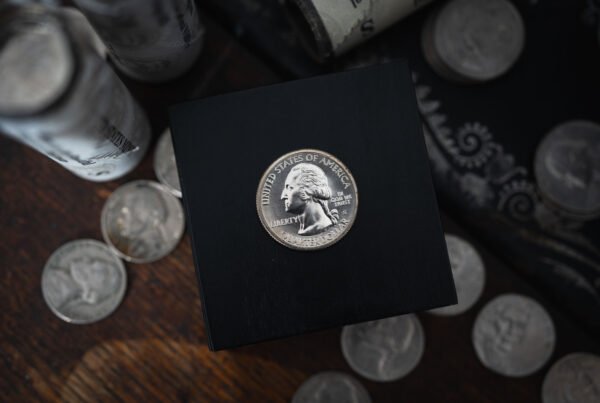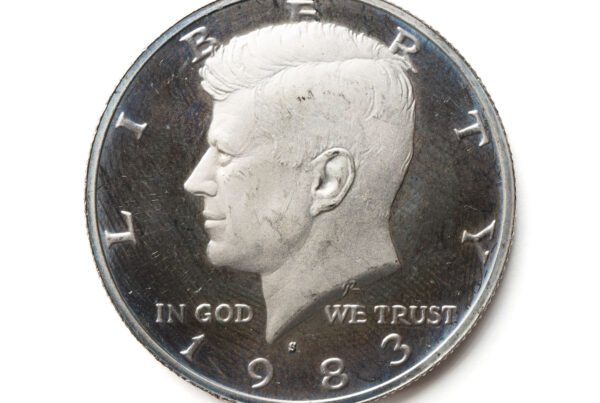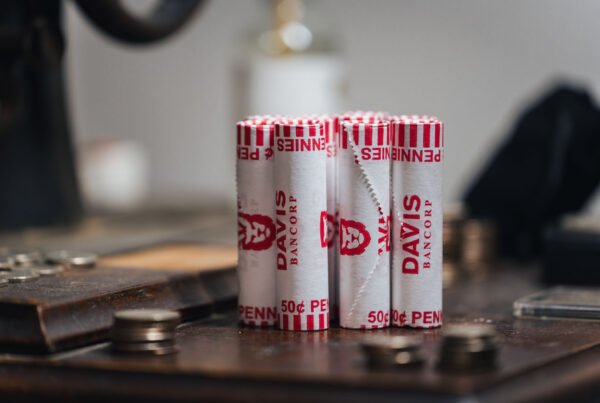1. Morgan Dollar History
The Morgan dollar is one of the most famous and widely collected coins in American numismatics. First issued in 1878, it reflects the economic, political, and social climate of post-Civil War America, as well as the growing Western mining industry.
Named after its creator, George T. Morgan, the Morgan dollar was introduced as part of the Bland-Allison Act of 1878, which required the U.S. Treasury to collect millions of ounces of silver from Western mines and convert it into silver dollars. The act was largely influenced by silver mining interests, which urged Congress to reinstate silver as the nation’s currency. The coin was minted from 1878 to 1904, then reintroduced for one year following the passage of the Pitman Act of 1921, which authorized the smelting of over 270 million silver dollars to support Britain during World War I.
Subsequently, to celebrate the centennial of the final Morgan dollar, the United States Mint introduced new versions in 2021 and subsequent years. The Morgan Dollar holds cultural significance as a representation of the Gilded Age, the American West, and the rise of the United States as an industrial power. Its large size, timeless design, and silver composition make it extremely popular with collectors.
2. Morgan Dollar 1878–1921 Specifications
The original Morgan Dollar collection featured coins minted at five distinct locations: Philadelphia (which has no mint mark), New Orleans (O), San Francisco (S), Carson City (CC), and Denver (D) – although the Denver mint was only used in 1921.
Here are the key specifications of the 1878–1921 Morgan Dollars:
- Designer: George T. Morgan
- Composition: 90% silver, 10% copper
- Weight: 26.73 grams
- Diameter: 38.1 mm (1.5 inches)
- Thickness: 2.4 mm
- Silver Content: 0.77344 troy ounces
- Edge: Reeded
- Obverse Design: Profile of Lady Liberty wearing a Phrygian cap
- Reverse Design: Bald eagle with wings spread, clutching arrows and an olive branch
The most desirable Morgan Dollars are those minted in Carson City, especially those in uncirculated condition. The 1879-CC, 1889-CC, and 1893-S coins are notably rare and expensive. The 1921 version has slightly changed in appearance due to the use of new technology to produce the coin. Additionally, it is the only Morgan Dollar to be minted at the Denver Mint.
3. Morgan Dollar 2021–2025 Specifications
In 2021, the United States Mint released a new edition of the Morgan Dollar to celebrate the centennial of its last production. These contemporary coins are commemorative and not for everyday use; they are produced using state-of-the-art technology that ensures a superior finish.
Key Specs of the 2021–2025 Morgan Dollars:
- Composition: 99.9% silver (pure silver)
- Weight: 26.686 grams
- Diameter: 38.1 mm
- Silver Content: 0.858 troy ounces
- Finish Options: Uncirculated, Proof, and Special Editions (e.g., Reverse Proof)
- Edge: Reeded
- Mint Marks: Philadelphia (no mark), Denver (D), San Francisco (S), New Orleans (O, privy mark), Carson City (CC, privy mark)
Some 2021 coins feature private marks, rather than being minted at the original mint, in homage to the traditions of defunct mints such as Carson City and New Orleans.
Contemporary Morgan Dollars are produced in limited quantities and sell out quickly due to intense interest from collectors and silver investors. More coins are expected to be released as part of a numismatic initiative that will continue through 2025, linking the Morgan Dollar to the Peace Dollar, which replaced it in 1921.
4. Value of Morgan Dollars
The value of a Morgan Dollar can vary significantly based on several factors:
Key Value factors:
- Date and mint mark: Rare combinations such as 1893-S, 1889-CC, and 1895 can fetch thousands of dollars.
- Condition: Coins are graded from Poor (P-1) to Mint State (MS-70). Uncirculated coins with professional grades (e.g., MS65+) command higher prices.
- Mintage: Low mintage often results in higher prices.
- Historical significance: Coins with unique stories or defects generally command higher prices.
- Market appeal: Collector interest and changes in silver prices can vary, which affects the overall value.
Common Morgan Dollars (Cheaper & Easier to Find)
The 1921 Morgan Dollar is the most common and readily available coin to collectors, especially those minted in Philadelphia and San Francisco. Due to their large production runs, these coins are widely available, making them affordable and easy to find, even in excellent condition.
Other Common Dates:
1882-1884 CC Morgan: Although this Carson City Mint Morgan Dollar is older, it remains relatively common and budget-friendly within the CC series.
1883-O, 1887-O, and 1897-O: These coins, minted in New Orleans, are generally more common and less expensive than other Morgan dollars.
Most Valuable Morgan dollar
The most valuable Morgan silver dollars are:
1893 Morgan dollar: $3,000-$1,250,000
1884 Morgan dollar: $34-$1,250,000
1889 Morgan dollar: $425-$1,200,000
Conclusion
The Morgan Dollar represents more than just a silver coin; it embodies a part of American history, artistry, and economic development. Whether you appreciate its beautiful design, fascinating history, or investment potential, the Morgan Dollar offers something of interest to every type of coin collector.
Emerging from the silver politics of the 19th century and experiencing a resurgence in popularity in the 21st century, the Morgan Dollar continues to fascinate coin lovers worldwide.



